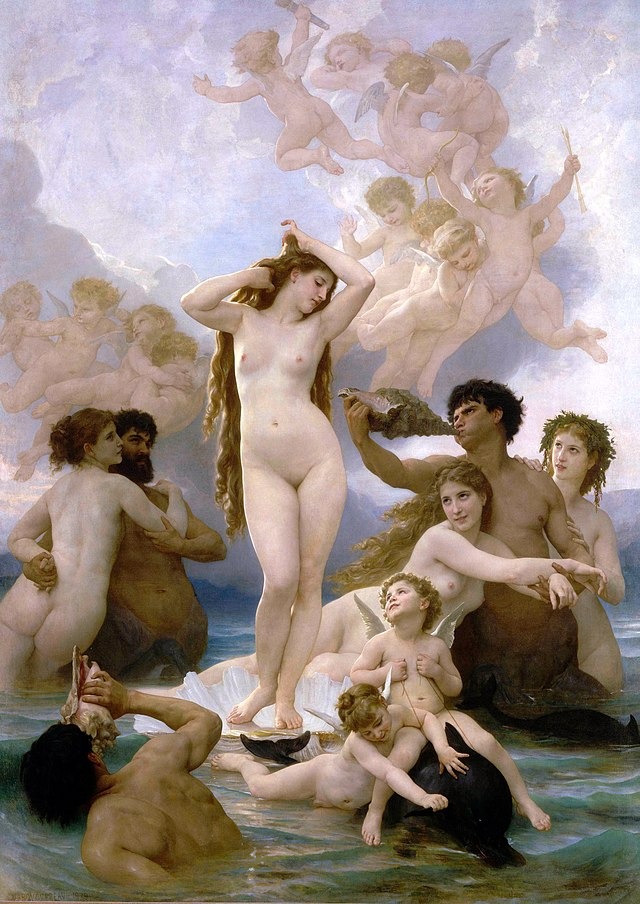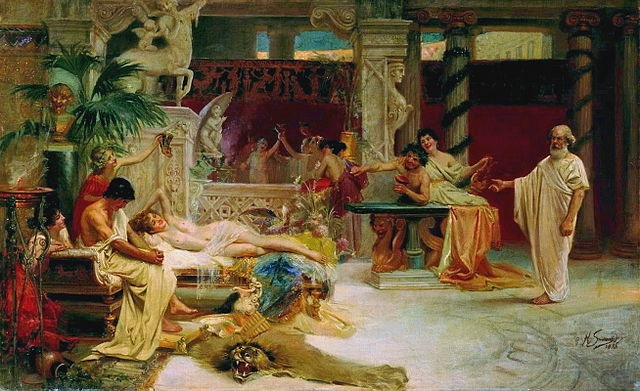
The Aphrodite Myth
The myth of Aphrodite is not a fairytale.
It is a timeless gem, a many-sided diamond with infinite refractions, used by every culture for millennia. It offers women an alluring passageway into the magic and mystery of our unconscious, which reveals what we are.
In Greek mythology, Aphrodite is the goddess of love, beauty, sex, and seduction. She is the mother of the eternal cycle of temptation.
The average reader of the Greek myth of the beauty Aphrodite would see it as just another bedtime story you could read in an hour. However, understanding this mythology helps us unpack a healing journey for modern women with Aphrodite's gifts.
According to Greek mythology, Aphrodite was born from the sea, fully mature. Naked in all her glory, she dripped with an innate magnetism and fertility that immediately attracted the attention of gods and men alike. Just as quickly, she caused great conflict among competing male interests.
Zeus, the king of the Greek gods, saw her intrinsic feminine power as dangerous to the world's order. So, he married her off to Hephaestus, god of Blacksmiths and Metallurgy, the most unsightly of all the gods. Hephaestus, ensnared by Aphrodite’s beauty, spirited her away. He wanted to keep his new wife all to himself.
Hephaestus’ wealth and generosity satisfied Aphrodite’s material cravings for a while, but she was disgusted by him sexually. Starved for passion, she could not be kept in a gilded marital cage. She needed freedom; her seductive nature could not be contained.


Aphrodite's daughters have existed since ancient times. However, these seductresses have gone from once revered sexual healers to victims of endless shaming, ignorance, and abuse in traditional society.
Aphrodite is the patroness of carnal lust. The priestesses of her temples were proficient in the art of sexuality and were held in high esteem. Although they were known as holy whores, like their patron Aphrodite, each priestess was considered “a virgin.” In this context, of course, the word virgin does not have the meaning it holds today: Aphrodite's priestesses were both sexually and socially their own persons, not married, bound to, or possessed by any man.
Another group of Aphrodisian Women in ancient Greece, the Hetaira, female companions, were concubines, but each one was exclusive to one man. They freely expressed their sexuality in public and dressed seductively. Greece socially accepted this non-domesticated type of femininity. Their talents, which extended far beyond their sexual acumen, were celebrated. These concubines were highly educated and cultured in the arts. At times, the Hetaira were politically influential and participated in the symposia, a key Hellenic social institution normally open only to aristocrats. As independent women, they were expected to earn income and pay taxes.
Today, in our patriarchal society, sex is seldom seen as a pathway to spiritual enlightenment. Aphrodite and her daughters continue to inspire the creation of beauty in the world through literature, poetry, art, music, and even business and technology.